#1 bce
Text
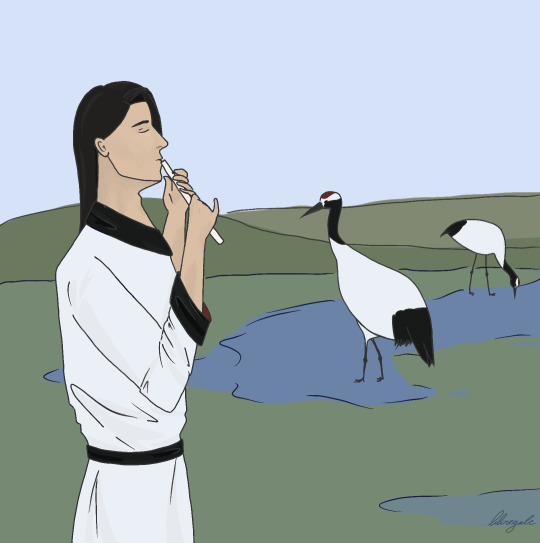
JiaHu GuDi (Flute), 7000-5700 BCE, one of the oldest known playable instruments
For @historical-hetalia-week's prompt 10,000-5,000 BCE
10 notes
·
View notes
Text
ahgurhghrheigsldrughdlghriwpwpghfugh*
*this is the sound of me laying face down on the floor
#im reorganizing some comics to be in chronological order instead of thematic order#so instead of pompey voyeurism comic 1 > 2 > 3#its like crassus sulla comic 1 > pompey voyeurism comic 1 + 2 > caesar comic 1#the evil clown circus that runs my thoughts is at fault for this. 'why not try it out all in order it could be fun' MAYBE SO#but at WHAT COST#(the current timeline in my journal does not have space for a comics timeline so i have to draw another one and its just#t e d i o u s. you would not BELIEVE how many times i write the BCE years wrong)
2 notes
·
View notes
Text
i find it so weird that the birth of jesus of nazareth is used as the marker between ce and bce. not just because it's intrinsically connected to christianity or whatever but also because he was believed to be born around 4 bce so that means it even fails in that regard. you guys had One Job and you Still fucked it up by an estimate of four years
#this was funnier in my head but it's still fascinating to me#like the marker's supposed to be his birth like that's where bc/ad came from#but he was born before 1 ce !#to be fair the estimates can be anywhere from 1-11ish bce for his birth#but that's still before 1 ce. so why is he the marker#at the end of the day i'm not actually pissed over this but it's funny#gloomy.txt
0 notes
Text
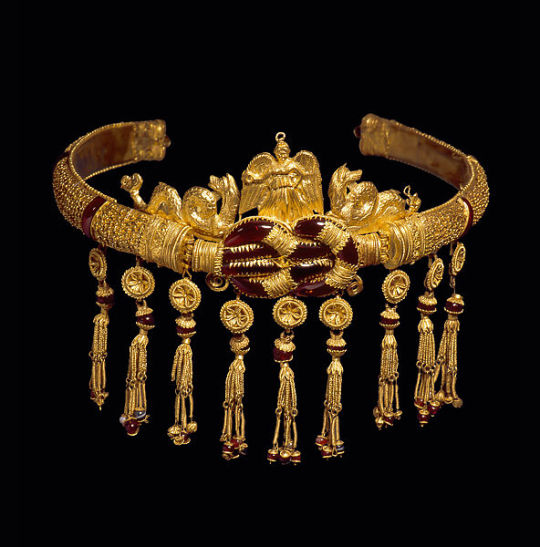
Greek Gold diadem with Hercules knot (250–150 BCE),
Gold, garnet, carnelian, sardonyx
3×9 1/8 in. (7.6 × 23.1 cm).
On loan to the Metropolitan Museum.
#greek art#ancient artifacts#ancient art#antiquities#antiquity#jewellery#archeology#met museum#art history#history#garnet#carnelian#sardonyx#heracles#hercules
2K notes
·
View notes
Text
El BCE multa con 3,1 millones a Abanca por no informar a tiempo de un ciberataque - Cinco Días
El BCE multa con 3,1 millones a Abanca por no informar a tiempo de un ciberataque – Cinco Días
El Banco Central Europeo (BCE) multado con 3,145 millones de euros a Abanca por no haber informado en los plazos establecidos de que había sufrido un ciberataque. De acuerdo con las normas del supervisor, los bancos deben informar de los ciberataques en un plazo máximo de dos horas tras tener conocimiento de que se han producido.
En concreto, Abanca fue objetivo de un ciberataque a sus sistemas…
View On WordPress
#1 millones#2019#3.#abanca#aclarar#banco#bce#caso#ciberataque#económicas#económico#episodio#gallego#informacion#informar#multar#pérdida#remontar#sufrir#tiempo#vivir
0 notes
Text








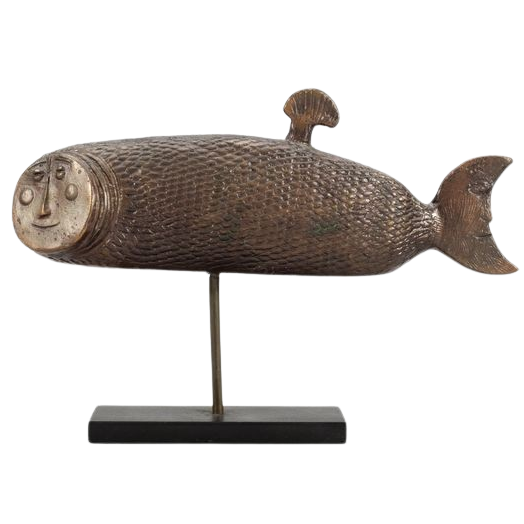
Nasty little guy PNGs, part 2.
(1. Wooden dog, 2. Steiff hippo, 3. Ceramic sun sculpture, 4. Dog sculpture by Kouichi Maekawa, 5. Relief from 4th-3rd c. BCE, 6. Grace Drayton dog, 7. Guardian dog, 8. Jellycat turtle plushie, 9. Fish sculpture by Stig Lindberg)
682 notes
·
View notes
Text



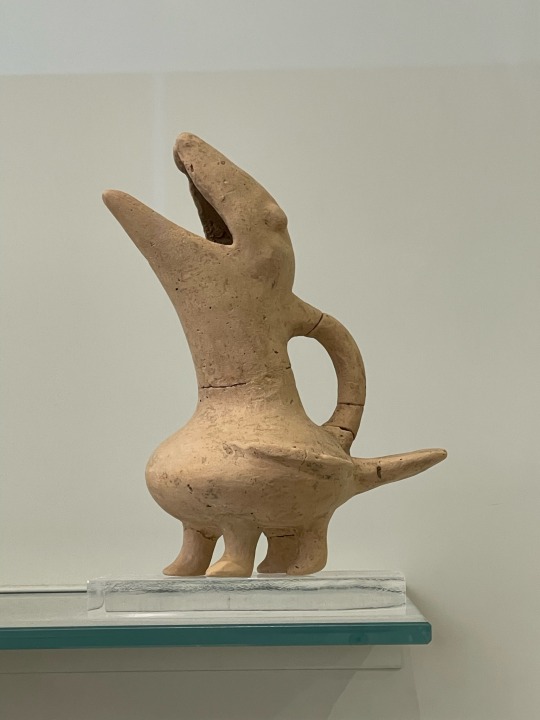
I had the immense privilege of going to Greece earlier this summer. I took 400 pictures of ancient pottery and came home inspired to put octopodes on everything.
1. My octopodes on some tiny vases and a cup
2. My reference photo of a Mycenean amphora with an octopus in the Minoan Marine Style, 1500s BCE. (National Arcaelogical Museum, Athens)
3. My bird jug with printed reference photo
4. Bird-shaped vessel from Crete, 2700 - 1900 BCE (Heraklion Archaelogical Museum, Heraklion)
2K notes
·
View notes
Text

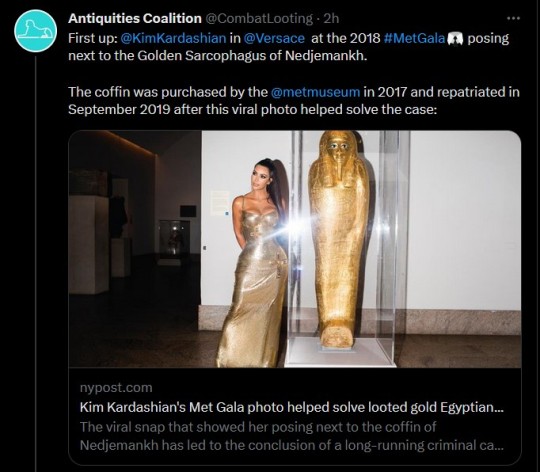
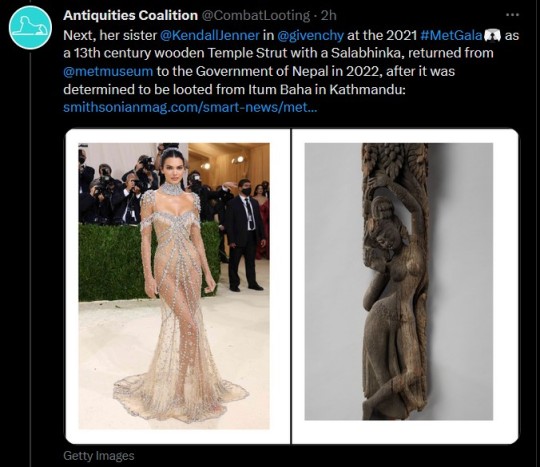
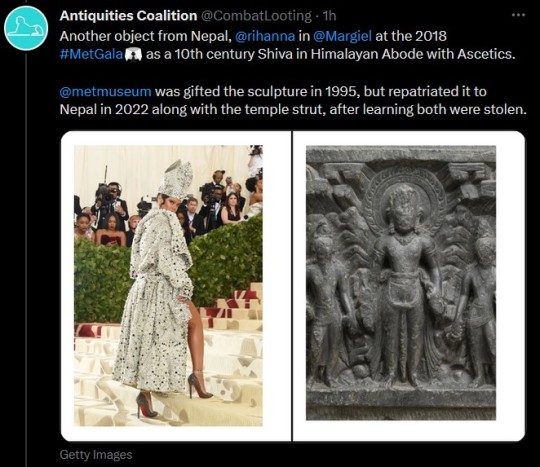

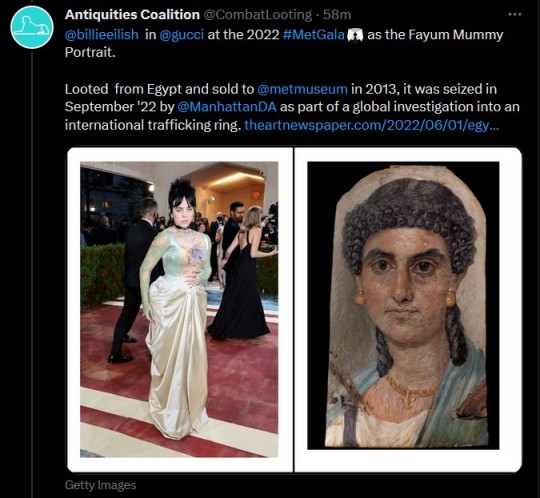
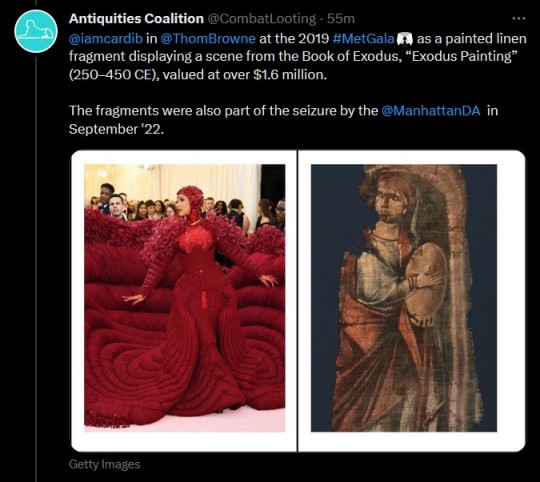
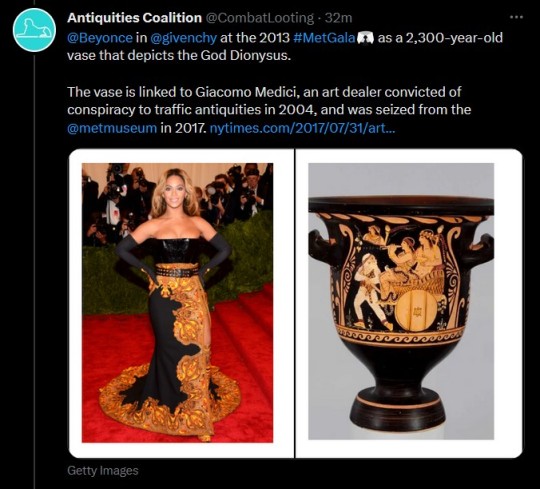
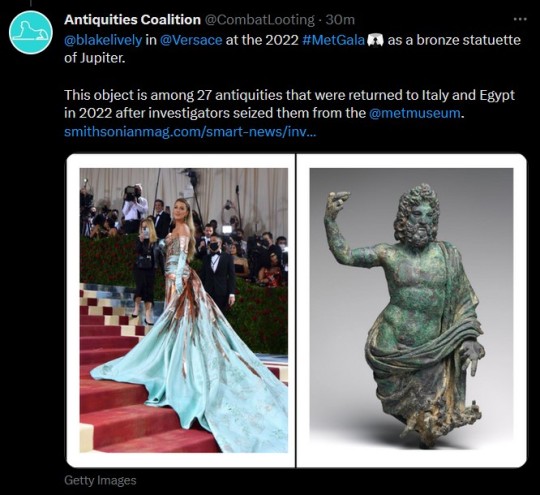
Looks vs. Loot at the Metropolitan Museum of Art by The Antiquities Coalition (@/CombatLooting) on Twitter
Transcription below the cut
1: The #MetGala may be "fashion's biggest night," but tonight's event hides some dark truths at @/metmuseum...including a long history of looted antiquities. To spotlight some of the contested objects from the Met's collection, we are featuring #MetGala vs. Loot [THREAD]
2. First up: @/KimKardashian in @/Versace at the 2018 #MetGala posing next to the Golden Sarcophagus of Nedjemankh. The coffin was purchased by @/metmuseum in 2017 and repatriated in 2019 after this viral photo helped solve the case. (link)
3. Next, her sister @/KendallJenner in @/givenchy at the 2021 #MetGala as the 13th century wooden Temple Strut with Salabhinka, returned from @/metmuseum to the Government of Nepal in 2022, after it was determined to be looked from Itum Baha in Kathmandu. (link)
4. Another object from Nepal, @/rihanna in @/Margiel at the 2018 #MetGala as a 10th century Shiva in Himalayan Adobe with Ascetics. @/metmuseum was gifted the sculpture in 1995, but repatriated it to Nepal in 2022 along with the temple strut, after learning both were stolen.
5. Dakota Johnson in @/gucci at the 2022 #MetGala as a terracotta kylix (c. 470 bCE). This piece, valued at $1.5 million, was seized from the @/metmuseum in July 2022 after being linked to Italian antiquities trafficker Gianfranco Becchina. (link)
6. @/billieeilish in @/gucci at the 2022 #MetGala as the Fayum Mummy Portrait. Looted from Egypt and sold to @/metmuseum in 2013, it was seized in September '22 by @/ManhattanDA as part of a global investigation into an international trafficking ring. (link)
7. @/iamcardib in @/ThomeBrowne at the 2019 #MetGala as a painted linen fragment displaying a scene from the Book of Exodus, 'Exodus Painting" (250-450 CE), valued at over $1.6 million. The fragments were also part of the seizure by the @/ManhattanDA in September '22.
8. @/Beyonce in @/givenchy at the 2013 #MetGala as a 2,300-year-old vase that depicts the god Dionysus. The vase is linked to Giacomo Medici, an art dealer convicted of conspiracy to traffic antiquities in 2004, and was seized from the @/metmuseum in 2017. (link)
9. @/blakelively in @/Versace at the 2022 #MetGala as a bronze statuette of Jupiter. This object is among 27 antiquities that were returned to Italy and Egypt in 2022 after investigators seized them from the @/metmuseum. (link)
5K notes
·
View notes
Text
El BCE sube los tipos al 1,25%: así es el impacto en hipotecas y familias
El BCE sube los tipos al 1,25%: así es el impacto en hipotecas y familias
El Banco Central Europeo ha subido en 75 puntos básicos los tipos de interés por segunda vez en lo que va de año (en julio subió el precio del dinero al 0,5%) y no será la última, pues se prevén más movimientos al alza en este 2022 para luchar contra una inflación que supera el 9% en la zona euro. Se trata del mayor alza de su historia. El principal efecto en la economía es un encarecimiento de…

View On WordPress
0 notes
Text
some analysis of this scene from 2x02, because i am going absolutely insane over it:
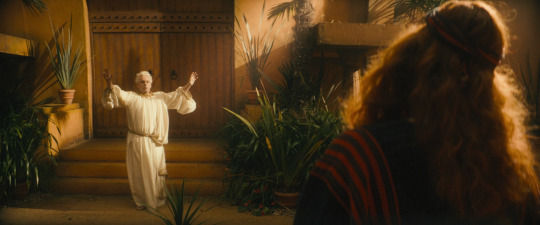
first up: it's 2 500 BCE. They've known each other for around 1500 years at this point, but they haven't been meeting up very often; it's implied at this point, that they've only met at the Garden, and the Flood, and now here (as well as in Heaven, but there's varying interpretations about how much they each remember of Heaven).
(worth noting that these meetings are all bible-related meetings)
So, they don't know each other very well at all. This is why Aziraphale approaches Crowley so cautiously (apart from the fact that he thinks Crowley's going around murdering goats and soon kids). He doesn't know what happened to Crowley when he Fell, how he changed when he fell in with Lucifer, how God's rejection has warped Crowley's perspective or changed his morals (their meeting at the Flood seemed quite short, not enough time to get a definite picture.)
Aziraphale is still seeing Crowley as demonic, although there's already that thread of doubt - can you really see him trying to talk Hastur or Ligur out of this the way he does Crowley?

Aziraphale clings to the memory of Angel Crowley - Crowley gets quite defensive.

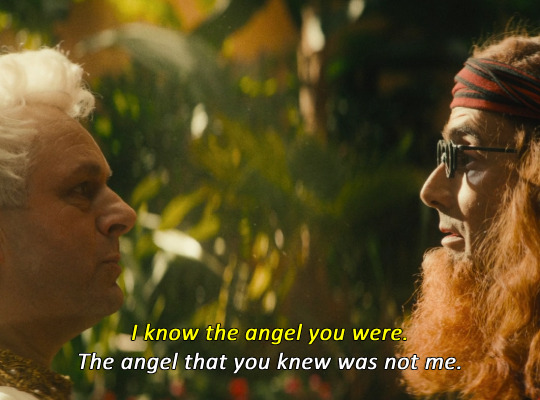
Here, Crowley reinforces that he's changed - personally I don't believe that he did fight in the War, but his views of God's Plan definitely got more extreme than "thats terrible god should get a suggestion box".
But, I also believe that here, Crowley is reinforcing that he is no longer an angel, and therefore no longer has to play by angel rules. He can do what he wants. He's a demon, it's in his job description.
And of course, that he is a demon, and he is Evil, and of course he would kill goats.
(more under the cut, because I just can't stop talking)
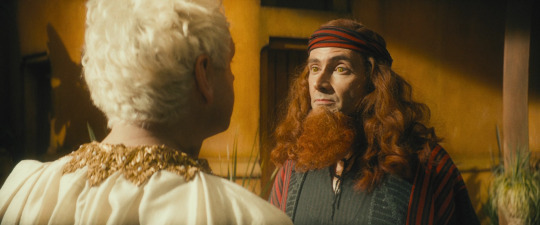
This shot is very yellow. Crowley's hair being the season 1 orange rather than red, the yellow walls, all accentuate the colour of Crowley's eyes, highlighting the physical reminder of Crowley's demonic nature.

I couldn't be bothered to gif it, but here, Crowley leans forward into Aziraphale's face. There are two reasons for this:
Get his yellow Demon Eyes right in Aziraphale face, just to hammer home his point.
It's an aggressive action, moving into someone's personal space like that. Saying, I could hurt you, I'm violent and aggressive and dangerous, I killed those goats, the kids are next.
The way the light hits Crowley's eyes in the above shot and the below shot also make them a very bright yellow. (Edit: I think someone pointed out that Crowley is making his eyes glow, but the overall yellowness of the scene serves to highlight this)
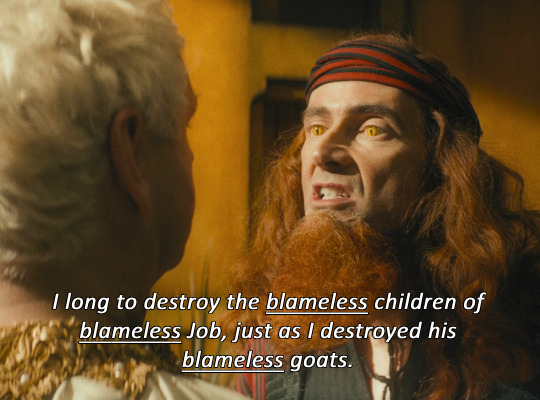
Clever wording on Crowley's part, because as we will find out, he faked the destruction of the goats to keep them safe, while making himself sound very evil.
You'll notice the repetition of "blameless"; this makes him seem even more evil, hurting the innocent, but also gives deeper insight into one of Crowley's biggest issues: hurting the innocent. What have they done to deserve this? Nothing.
This ties in quite nicely with what we have seen before of Crowley and free will; he gives people the option to sin. It's their actions that decide whether they end up in Heaven or Hell; they get what they deserve for their actions. He just makes it easier to choose Hell. (see: phone lines being down making people crankier and encouraging them to be horrible to each other, but it still being their choice, setting the holy water bucket above the door, so it's Ligur's choice to come in after Crowley that gets him killed.)
Note also the use of "long":

Aziraphale says to "tell me you want to do this". "Long" has rather stronger connotations than "want", but also rawer, more fundamental. Crowley is reminding Aziraphale that he is a demon, and that he has the traits of a demon, this is what he is now. He longs for violence, for destruction.
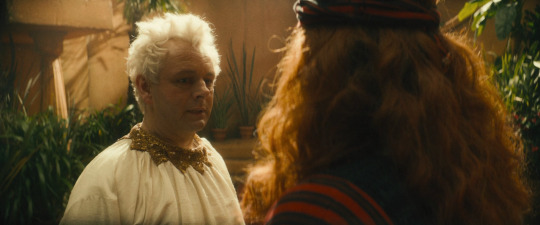
Aziraphale looks quite sad here. If you watch the video I linked, his previous conviction that Crowley doesn't want to do it is very strong. He fully believes in Crowley, that all he needs to do is reframe not killing the kids as within the rules of Hell, the way Crowley so often comes to do for Aziraphale ("Then you can't be certain that thwarting me isn't part of the divine plan too. I mean, you're supposed to thwart the wiles of the Evil One at every turn, aren't you?" "If you put it that way, Heaven couldn't actually mind me thwarting you.").
Aziraphale believed Crowley was still good, that the angel he remembered was still in there. But Crowley rejects it - and it hurts. Crowley has become what a demon should be.

Crowley looks quite sorrowful here, too: he already cares for Aziraphale (he fell in love at the Garden), and it hurts to decieve him, to disappoint him, to hurt him.
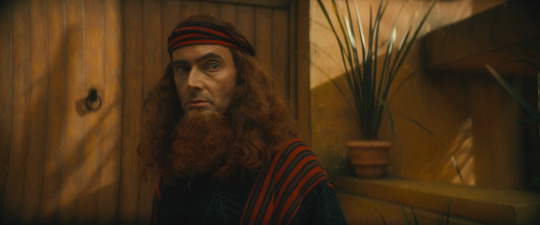
I would argue that here, Crowley is scared.
He's in shadow, which dims the yellows; his undemonic nature is about to be revealed.
And that is not safe, because Hell does not send rude notes. And here, Crowley is not doing just any temptation, but trying to help Satan win a bet (supposedly). And out of every demon in Hell, Satan is the one you want to piss off the least.
But here, Crowley is scared because Aziraphale could reveal him - because Aziraphale is on God's side, and because it is revealed that Crowley is not nearly as demonic as he makes himself out to be. He's vulnerable. Aziraphale could scorn him, hurt him. But instead:

Aziraphale is incredibly smug. "I knew I was right", he says. "I knew you were still good".
And here is another issue: Aziraphale conflates God/Heaven/angels with good, and demons/Hell with bad.
And Crowley does not see Heaven as good. He doesn't want Aziraphale to see his angelic core past the demonic exterior. He's on his own side.
This, for Aziraphale, confirms that "the angel you knew is not me", is not correct.
And I think, out of the three minisodes, it's this one that does the most for fleshing out Aziraphale and Crowley's frames of mind this series, and why they choose what they choose in ep6.
Aziraphale has been proven right about Crowley's angelic nature, and that he wants to do good, but can't, for fear of Hell's retribution.
And Crowley does not see Heaven as good. He recognises that being an angel again will not allow him the freedom to do good. (as Aziraphale had to try and talk a demon into helping him save the kids from God.)
#good omens#crowley#aziraphale#meta#good omens meta#job minisode#ineffable husbands#aziracrow#go meta#good omens analysis#late.meta
987 notes
·
View notes
Text
Isaiah 6: The Year of King Uzziah's Death
God met Isaiah in his sorrow, and in that moment of personal bereavement and spiritual concern, gave the young prophet a Christophany—a vision of Christ.
#Isaiah6 #IsawtheLord #Thetrainofhisrobe #Christophany #KingUzziah
The Kaddish for King Uzziah
He had quietly slipped into the Holy Place to offer up prayers and find some solace. The smoke of incense drifted over and around the censor in the center of the darkened room, the burnished golden stand gleaming softly by candlelight. To his right stood the symbol of God’s Shekinah, solid gold pomegranate blossoms and fruit ornately wrought along the six arms and…

View On WordPress
#740 bce#christophany#god&039;s glory#i saw the lord#i see the lord#Isaiah 6#isaiah 6:1#isaiah 6:1-5#king uzziah#old testament vision of jesus#the train of his robe#the train of his robe filled the temple with glory#the year uzziah died#uzziah#vision of jesus
0 notes
Text
How I teach the Iliad in highschool:
I’ve taught the Iliad for over a decade, I’m literally a teacher, and I can even spell ‘Iliad’, and yet my first instinct when reading someone’s opinions about it is not to drop a comment explaining what it is, who ‘wrote’ it, and what that person’s intention truly was.
Agh. <the state of Twitter>
The first thing I do when I am teaching the Iliad is talk about what we know, what we think we know, and what we don’t know about Homer:
We know -
- 0
We think we know -
- the name Homer is a person, possibly male, possibly blind, possibly from Ionia, c.8th/9th C BCE.
- composed the Iliad and Odyssey and Hymns
We don’t know -
- if ‘Homer’ was a real person or a word meaning singer/teller of these stories
- which poem came first
- whether the more historical-sounding events of these stories actually happened, though there is evidence for a similar, much shorter, siege at Troy.
And then I get out a timeline, with suggested dates for the ‘Trojan war’ and Iliad and Odyssey’s estimated composition date and point out the 500ish years between those dates. And then I ask my class to name an event that happened 500 years ago.
They normally can’t or they say ‘Camelot’, because my students are 13-15yo and I’ve sprung this on them. Then I point out the Spanish Armada and Qu. Elizabeth I and Shakespeare were around then. And then I ask how they know about these things, and we talk about historical record.
And how if you don’t have historical record to know the past, you’re relying on shared memory, and how that’s communicated through oral tradition, and how oral tradition can serve a second purpose of entertainment, and how entertainment needs exciting characteristics.
And we list the features of the epic poems of the Iliad and Odyssey: gods, monsters, heroes, massive wars, duels to the death, detailed descriptions of what armour everyone is wearing as they put it on. (Kind of like a Marvel movie in fact.)
And then we look at how long the poems are and think about how they might have been communicated: over several days, when people would have had time to listen, so at a long festival perhaps, when they’re not working. As a diversion.
And then I tell them my old and possibly a bit tortured simile of ‘The Pearl of Myth’:
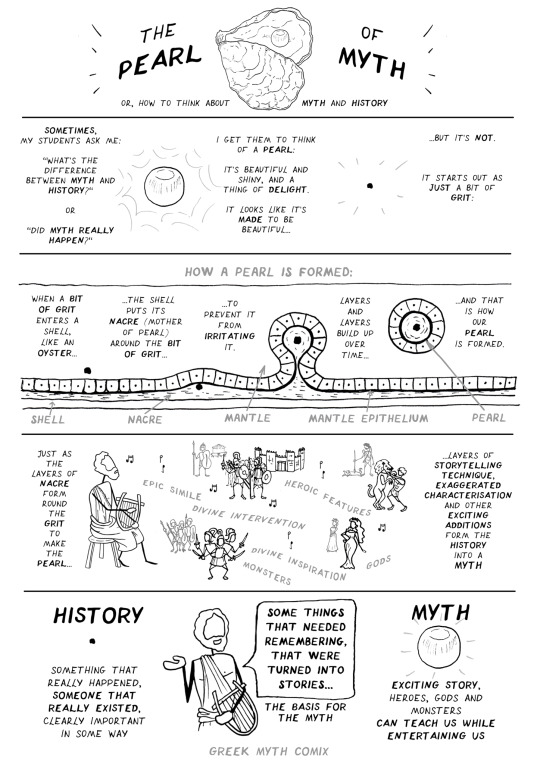
(Here’s a video of The Pearl of Myth with me talking it through in a calming voice: https://youtu.be/YEqFIibMEyo?sub_confirmation=1
youtube
And after all that, I hand a student at the front a secret sentence written on a piece of paper, and ask them to whisper it to the person next to them, and for that person to whisper it to the next, and so on. You’ve all played that game.
And of course the sentence is always rather different at the end than it was at the start, especially if it had Proper nouns in it (which tend to come out mangled). And someone’s often purposely changed it, ‘to be funny’.
And we talk about how this is a very loose metaphor for how stories and memory can change over time, and even historical record if it’s not copied correctly (I used to sidebar them about how and why Boudicca used to be known as ‘Boadicea’ but they just know the former now, because Horrible Histories exists and is awesome)
And after all that, I remind them that what we’re about to read has been translated from Ancient Greek, which was not exactly the language it was first written down in, and now we’re reading it in English.
And that’s how my teenaged students know NOT TO TAKE THE ILIAD AS FACT.
(And then we read the Iliad)
#man this week has been hard for classics teachers#Iliad#greek mythology#tagamemnon#greek myth#odyssey#homer#greek myth retellings#comix#greek myth comix#classics teacher#teaching#myth#history#ancient greek history#horrible histories#the idiots#teaching resources#teacher rant#Youtube
888 notes
·
View notes
Text
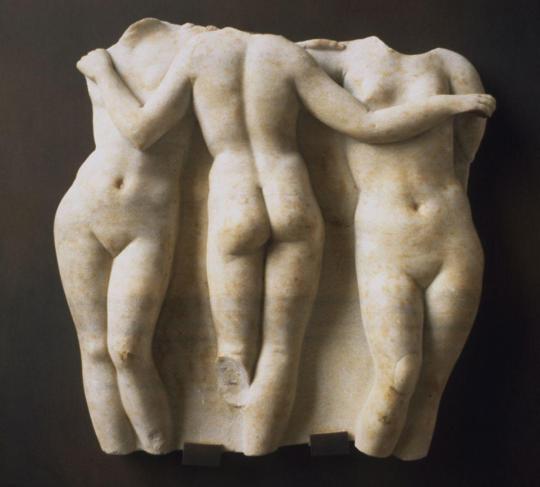
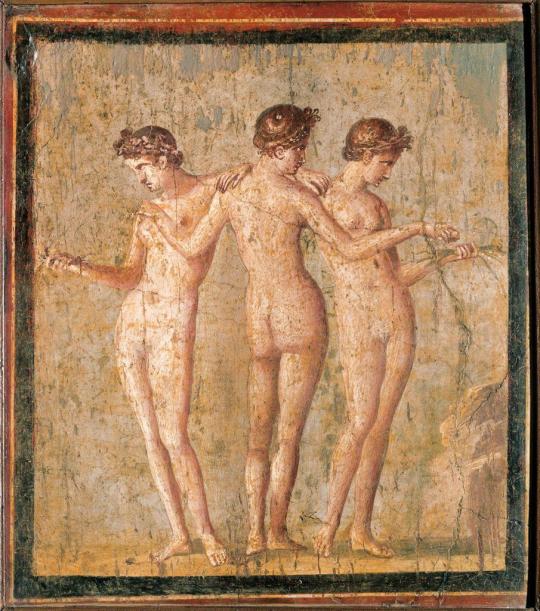
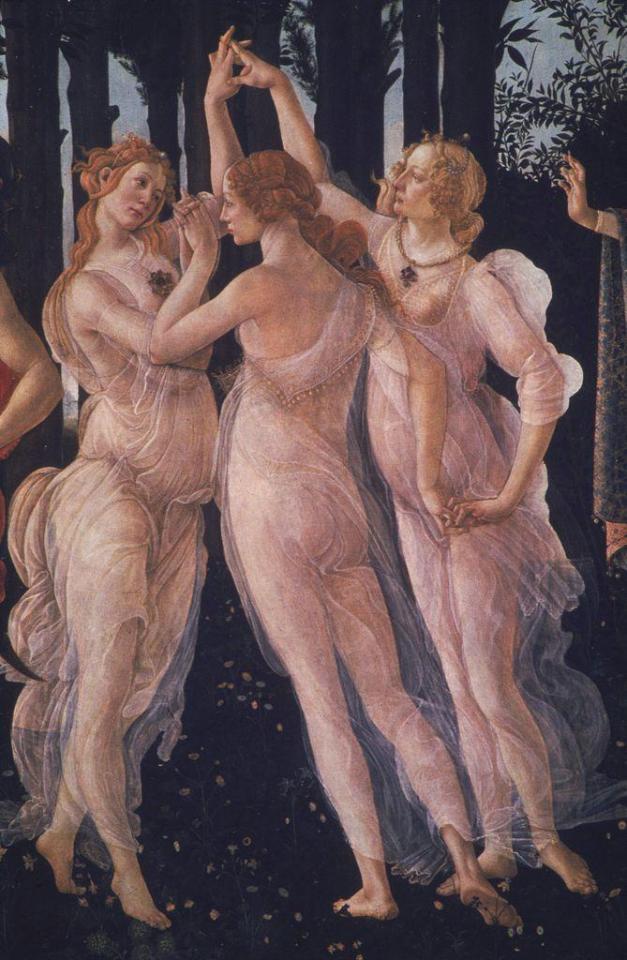
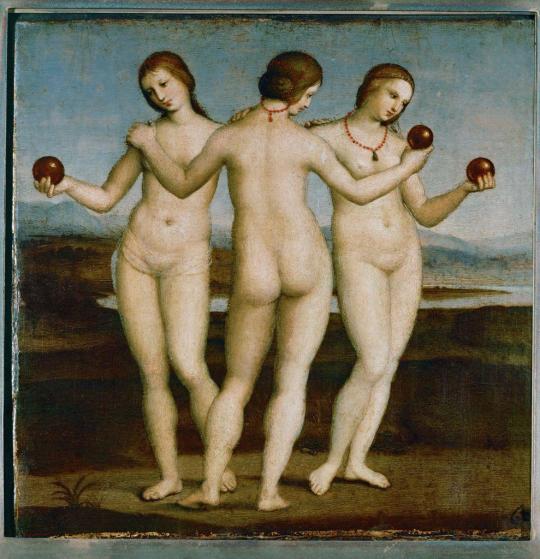

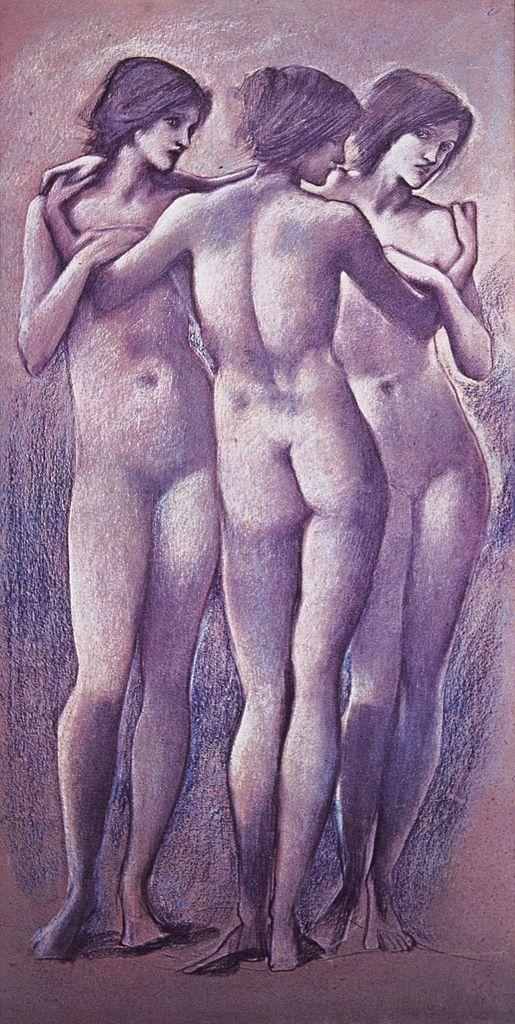
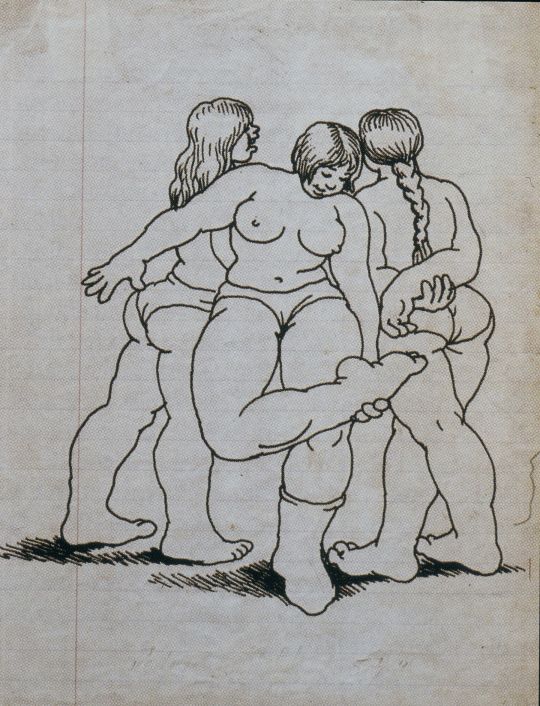
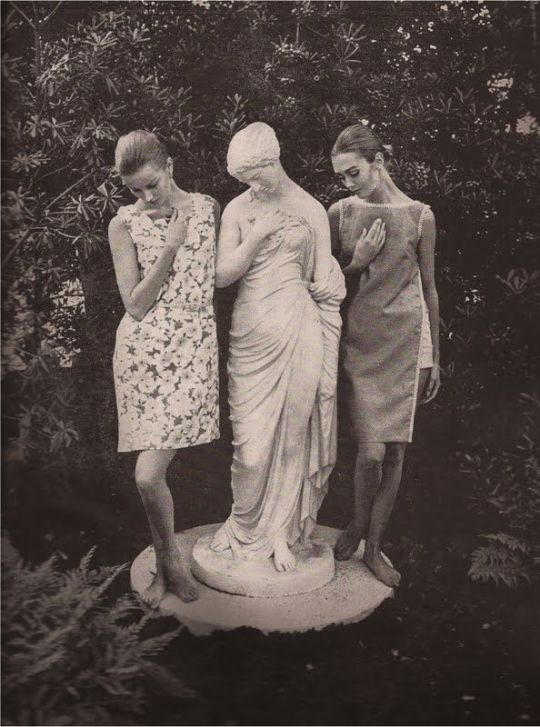
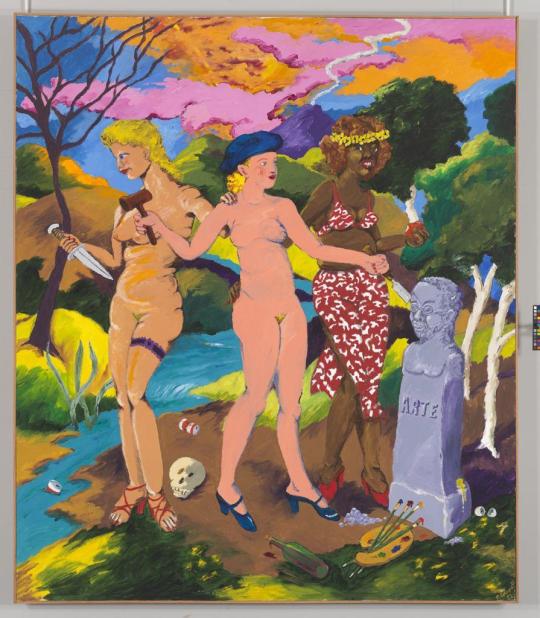
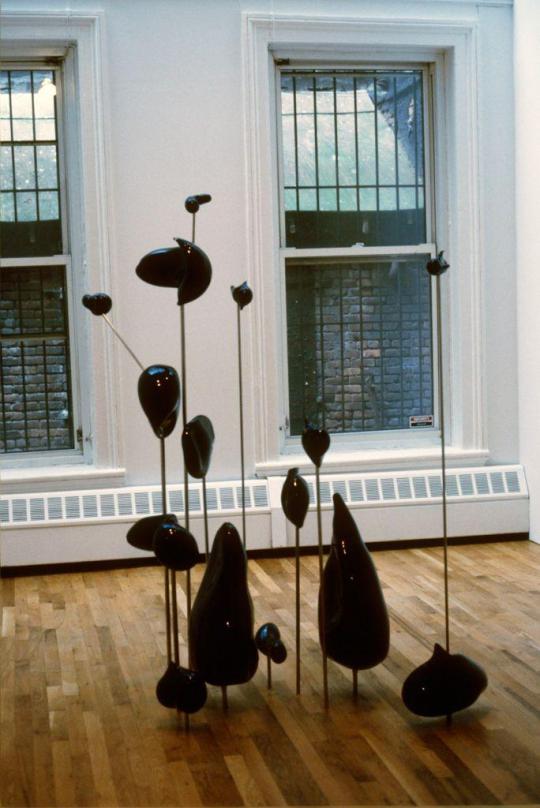

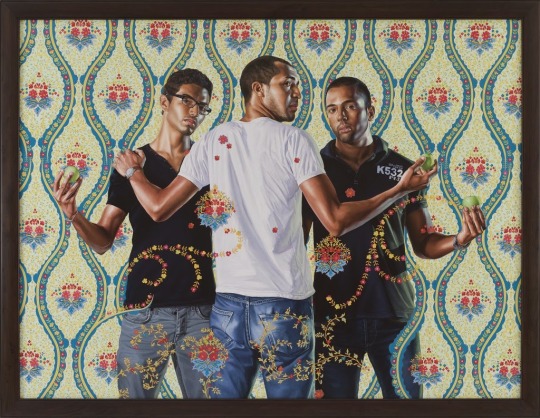
Three Graces
1-Greece 2nd century BCE
2- Pompei C60 BCE
3- Raphael 1502
4- Sandro Botticelli 1478
5- Edward Burne Jones 1885
6- Lucas Cranch the elder 1531
7- Robert Crumb 1968
8- Jeanloup Sieff ND
9- Robert Colescott 1981
10- Melissa McGill 1990s
11- . Yinka Shonibare 2001
12- Kehinde Wiley 2012
It would have been good to include Joel-Peter Witkin, The Three Graces, New Mexico (1988). But tumblr won't allow that
280 notes
·
View notes
Text
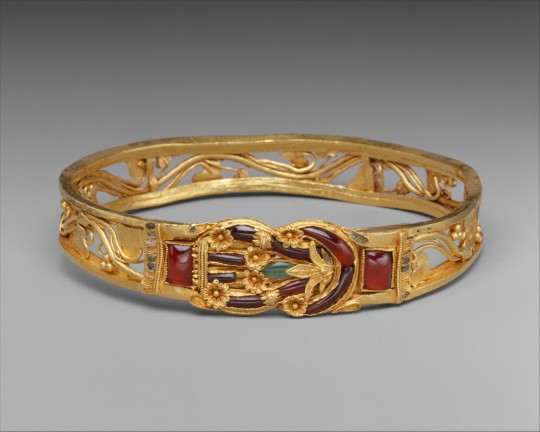
Gold armband with Herakles knot
Hellenistic period
3rd–2nd century BCE
Gold inlaid with garnets, emeralds, and enamel
3 1/2in. (8.9cm)
The Herakles knot on this sumptuous armband is enriched with floral decoration and inlaid with garnets, emeralds, and enamel. According to the Roman writer Pliny, the decorative device of the Herakles knot could cure wounds, and its popularity in Hellenistic jewelry suggests that it was thought to have the power to avert evil.
from The Metropolitan Museum of Art, New York
#greek art#hellenistic art#ancient artifacts#ancient art#antiquities#art history#archeology#hercules#carnelian#met museum#herakles
379 notes
·
View notes
Text
[Hanfu · 漢服]Chinese Late Warring States period(475–221 BC) Traditional Clothing Hanfu Based On Based On Chu (state)Historical Artifacts

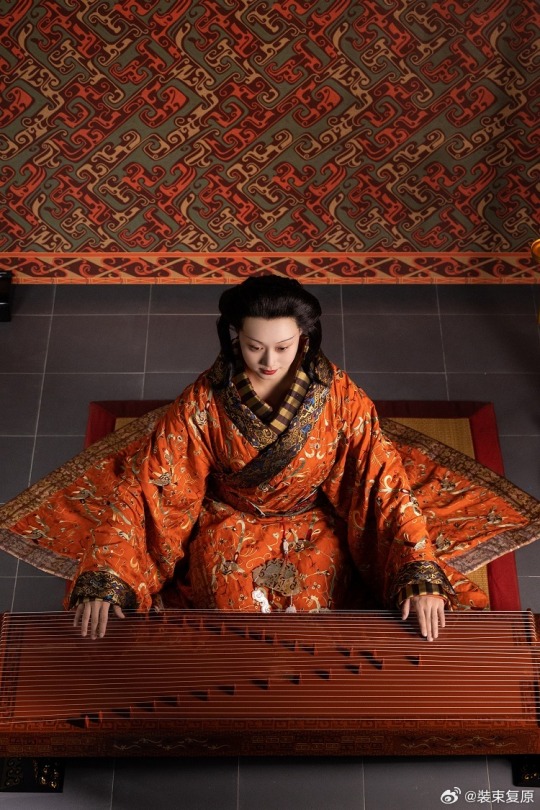
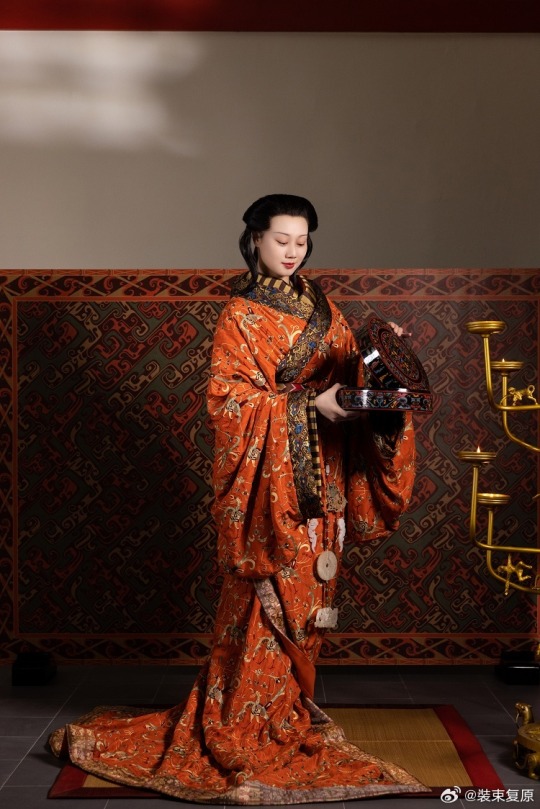
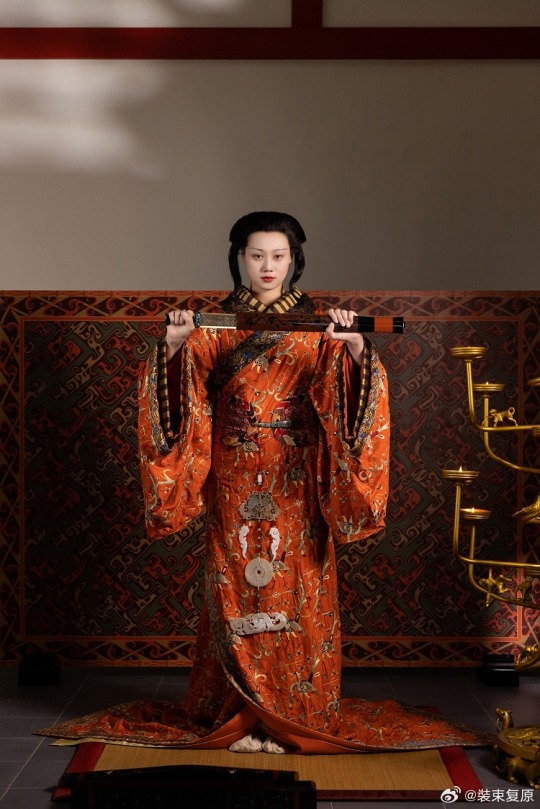
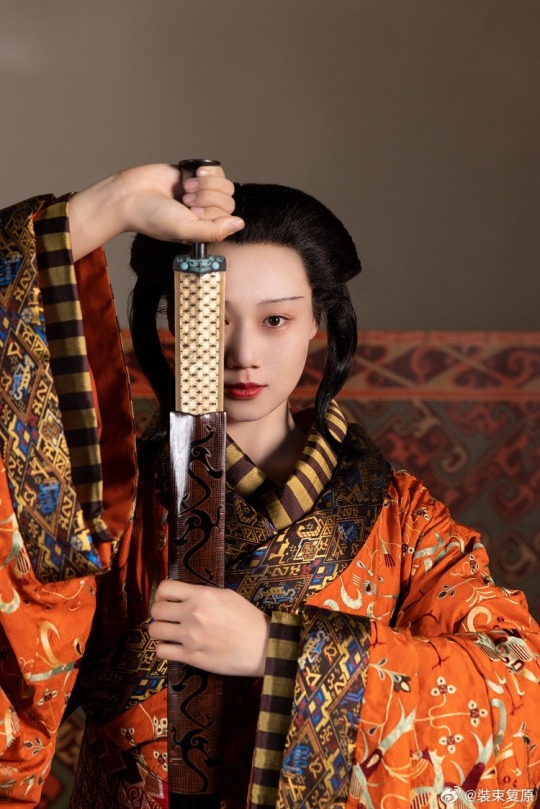
【Historical Artifact Reference】:
Late Warring States period(475–221 BC):Two conjoined jade dancers unearthed from Jincun, Luoyang,collected by Freer Museum of Art
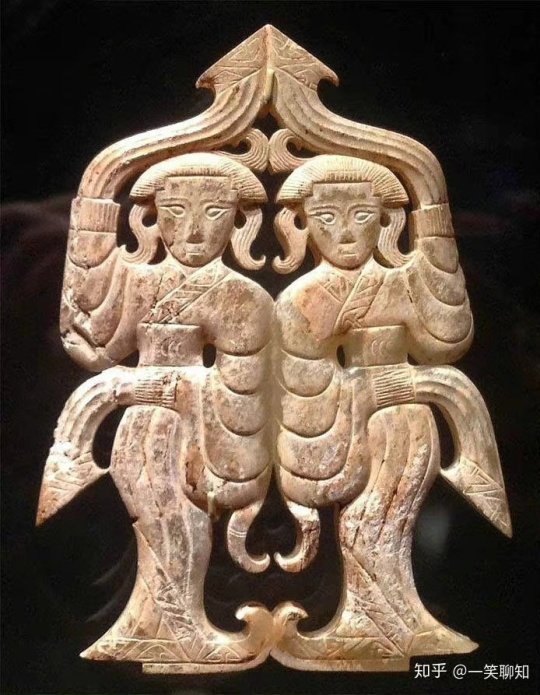
A similar jade dancer was also unearthed from the tomb of Haihunhou, the richest royal family member in the Han Dynasty, and was one of his treasures.

Warring States period, Eastern Zhou dynasty, 475-221 BCE,jade dancer by Freer Gallery of Art Collection.

Warring States period(475–221 BC)·Silver Head Figurine Bronze Lamp.Unearthed from the Wangcuo Tomb in Zhongshan state during the Warring States Period and collected by the Hebei Provincial Institute of Cultural Relics and Archaeology

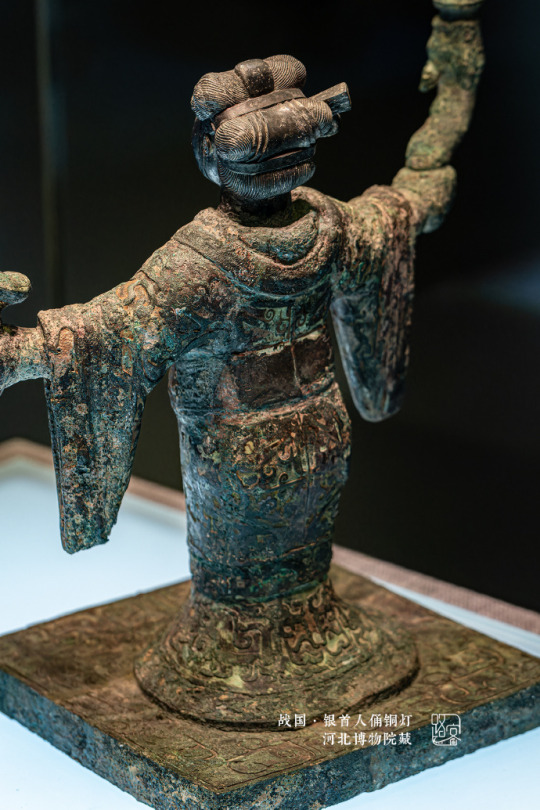
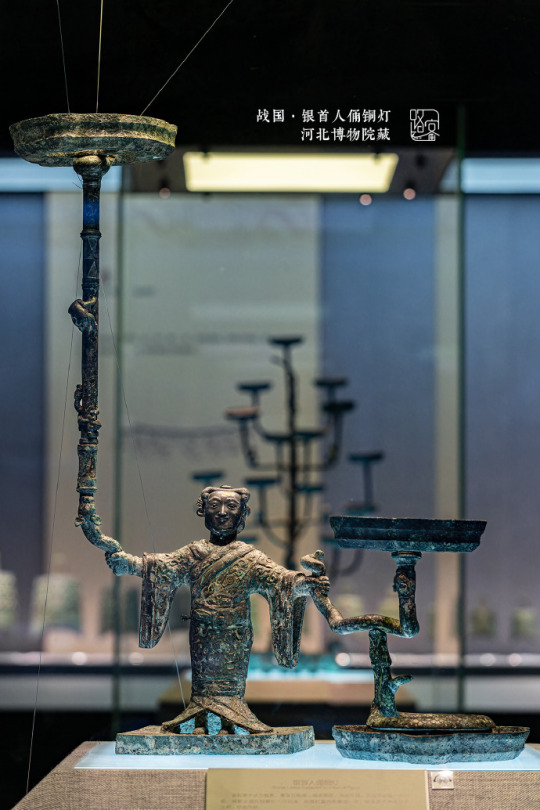
The figurine of a man dressed as a woman holds a snake in his hand, and 3 snakes correspond to 3 lamps.
Sword of Goujian/越王勾践剑:
The Sword of Goujian (Chinese: 越王勾践剑; pinyin: Yuèwáng Gōujiàn jiàn) is a tin bronze sword, renowned for its unusual sharpness, intricate design and resistance to tarnish rarely seen in artifacts of similar age. The sword is generally attributed to Goujian, one of the last kings of Yue during the Spring and Autumn period.
In 1965, the sword was found in an ancient tomb in Hubei. It is currently in the possession of the Hubei Provincial Museum.

【Histoty Note】Late Warring States Period·Noble Women Fashion
The attire of noblewomen in the late Warring States period, as reconstructed in this collection, is based on a comprehensive examination of garments and textiles unearthed from the Chu Tomb No. 1 at Mashan, Jiangling, as well as other artifacts from the same period.
During the late Warring States period, both noble men and women favored wearing robes that were connected from top to bottom. These garments were predominantly made of gauze, silk, brocade, and satin, with silk edging. From the Chu Tomb No. 1 at Mashan, there were discoveries of robes entirely embroidered or embroidered fragments. The embroidery technique employed was known as "locked stitches," which gave the patterns a three-dimensional, lively appearance, rich in decoration.
The two reconstructed robes in this collection consist of an inner robe made of plain silk with striped silk edging, and an outer robe made of brocade, embroidered with phoenixes and floral patterns, with embroidered satin edging. Following the structural design of clothing found in the Mashan Chu Tomb, rectangular fabric pieces were inserted at the junction of the main body, sleeves, and lower garment of the robe. Additionally, an overlap was made at the front of the main body and the lower garment to enlarge the internal space for better wrapping around the body curves. Furthermore, the waistline of the lower garment was not horizontal but inclined upward at an angle, allowing the lower hem to naturally overlap, forming an "enter" shape, facilitating movement.
The layered edging of the collars and sleeves of both inner and outer robes creates a sense of rhythm, with the two types of brocade patterns complementing each other, resulting in a harmonious effect. Apart from the robes, a wide brocade belt was worn around the waist, fastened with jade buckle hooks, and adorned with jade pendants, presenting an elegant and noble figure.
The reconstructed hairstyle draws inspiration from artifacts such as the jade dancer from the late Warring States period unearthed at the Marquis of Haihun Tomb in Nanchang, and the jade dancer from the Warring States period unearthed at Jin Village in Luoyang. It features a fan-shaped voluminous hairdo on the crown, with curled hair falling on both sides, and braided hair gathered at the back. The Book of Songs, "Xiao Ya: Duren Shi," vividly depicts the flowing curls of noblewomen during that period. Their images of curly-haired figures in long robes were also depicted in jade artifacts and other relics, becoming emblematic artistic representations.
The maturity and richness of clothing art in the late Warring States period were unparalleled in contemporary world civilizations, far beyond imagination. It witnessed the transition of Chinese civilization into the Middle Ages. The creatively styled garments and intricate fabric patterns from the Warring States period carry the unique essence, mysterious imagination, and ultimate romanticism of that era, serving as an endless source of artistic inspiration.
--------
Recreation Work by : @裝束复原
Weibo 🔗:https://weibo.com/1656910125/O6cUMBa1j
--------
#chinese hanfu#Late Warring States Period#Warring States period(475–221 BC)#hanfu#hanfu accessories#chinese traditional clothing#hanfu_challenge#chinese#china#historical#historical fashion#chinese history#china history#漢服#汉服#中華風#裝束复原
199 notes
·
View notes
Text
Minoan Heanos
The distinctive open-front dresses worn by Minoan women are probably even more iconic than the multi-layered kilts. Over time, there's dispute whether the garment is one piece or a separate bodice and skirt, but currently the one-piece theory is in ascendance.

The word heanos is derived from the Linear B logogram *146, wehanos. The wes- prefix, which is the squiggle in the middle, indicates a garment. Bernice Jones believes that this logogram represents the garment worn by Minoan men and women.
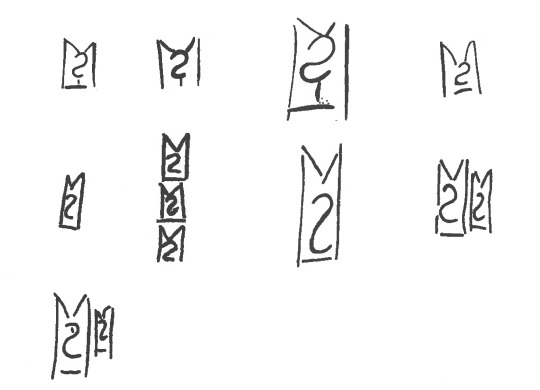
Marie-Louise B. Nosch, The Textile Logograms in the Linear B Tablets, pp 133-138
More research and construction below the cut:
The theory that the garment is a full-length tunic is further supported from imagery from the time, like these figures from the c. 1400 BCE Hagia Triada Sarcophagus. This detail from the sarcophagus shows three figures in some kind of procession, 2 women and 1 man. The woman at left wears a tunic with some kind of pelt as a skirt, and the other 2 figures wear tunics without anything over them, showing that they are one continuous, ankle-length garment.
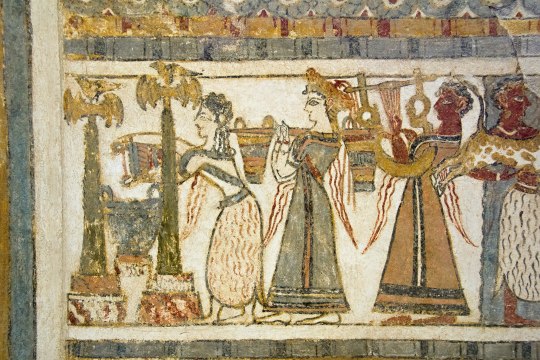
Some of the most important resources for interpreting how the heanos was constructed comes from the two women depicted in the House of the Ladies in Akrotiri, wherein the side seams of the tunic are clearly visible running along the side of the body and under the arm.
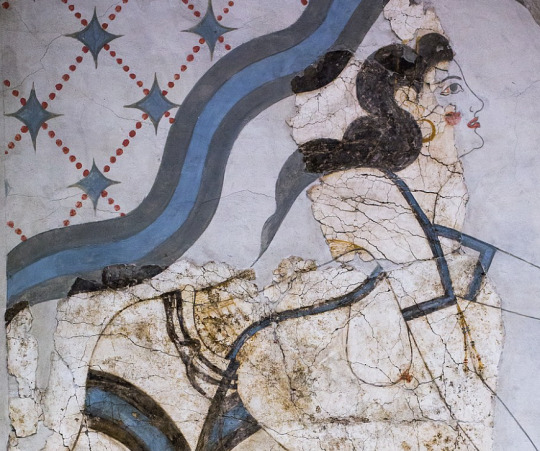
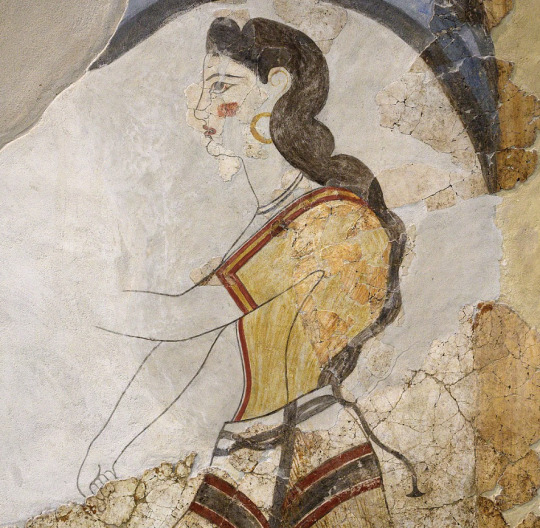
details of figures from the House of the Ladies, Akrotiri, via Wikimedia Commons
advadbsvasb
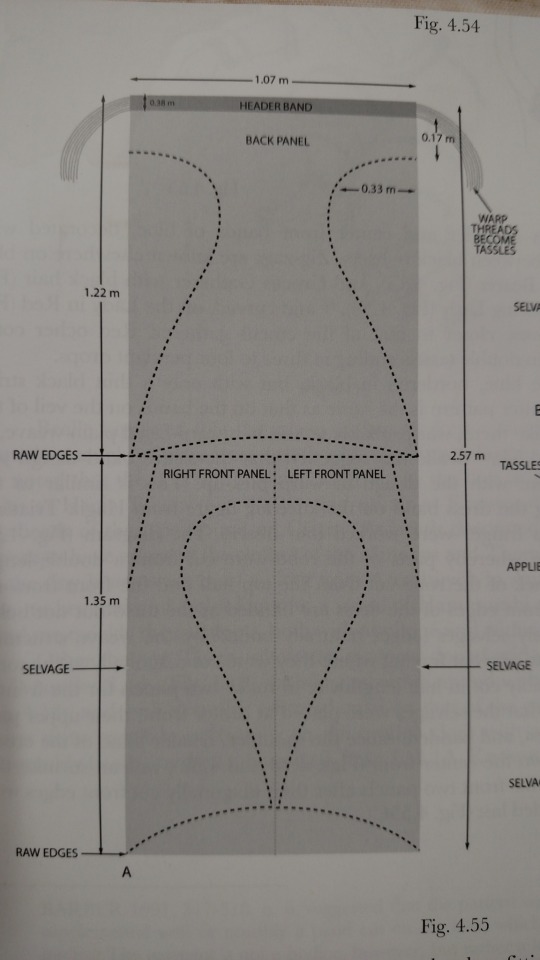

Diagrams from Bernice Jones' book Ariadne's Threads, p. 82, via Gorgeous Tangents
The heanos itself is made of 3 pieces of fabric: 1 back and 2 fronts. These diagrams show a concave hem like on the labrys-shaped kilt but I went with a straight hem, which is an equally valid option. The end of the sleeves are level with the edge of the hem at the widest point. This would probably be the width selvage-to-selvage on the fabric, being narrower than fabric widths commonly are today. There are 4 seams: the shoulder seam, the two side seams, and a front seam (optional, but recommended if you would prefer not being arrested.) It may be tempting to fold the fabric across the shoulder, so the only sewing is side seams and a neck hole, but this makes a weaker garment overall. I used this as a shortcut in my fitting muslin and it caused tears and weak points at the three points of the front opening.

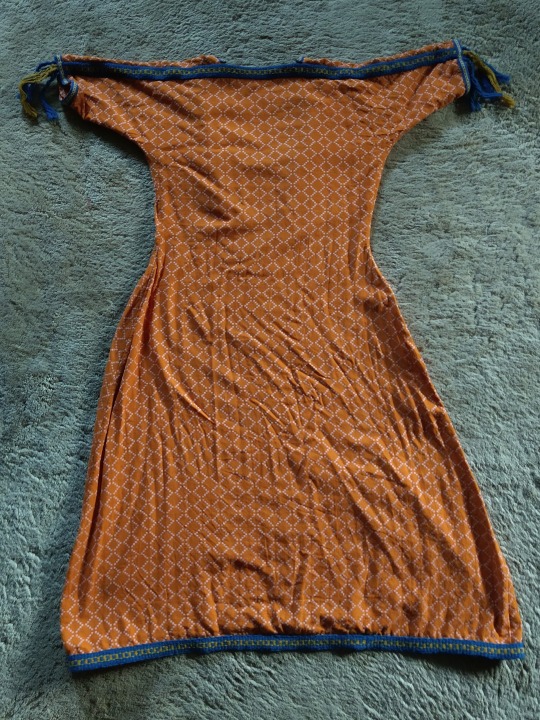
my fabric was a lightweight, moderately loose-woven cotton with a supplementary weave pattern in squares and diamonds. Linen or wool would have been more accurate but also? much harder to find from online quilting stores selling fabric for affordable prices. The main fabric is dark orange and the pattern is made out of pink/lilac threads. This weaving technique resulted in a LOT of long floats (unsecured expenses of thread) on the back--you can see how the wrong side of the fabric is much pinker than the right side. These floats could snag easily if I wasn't careful, so while it made a very effective visual for this tunic, I do not think that this fabric type would be viable for everyday wear. I'll leave it to people who actually know about weaving to ponder what more accurate weaving techniques would be.
Construction
The overall pattern is basically a T-shaped tunic, and the most important measurements are shoulder circumference, shoulder width, bust circumference, and the shoulder-waist length. In addition, you need measurements for the bicep, waist, shoulder-navel length, and hip circumference. After working out the fit with a muslin, I ended up with this pattern, 1 of 4 identical quarters.

Your first impulse may be to make the tunic very close-fitting, since the depictions in frescoes are skin-tight, but since the pattern has no added gusset this is a recipe for Cannot Move Arm. So I gave a very generous curve under the arm, which also made the dress look better when my arms were down, avoiding armpit wrinkles. I continued that ease into about an extra 2 inches added on to my waist measurement and plenty of extra space around my hips so that I could do exciting things like Sit Down.


I sewed the shoulder and side seams using the machine, and felled the raw edges on each side of the seam by hand with a whipstitch. I foided back the front edges of the v-neck instead of cutting them, which was a tip I got from the Gorgeous Tangents blog. This strengthens the neckline and keeps it from stretching, and also means that everything can be readjusted if you have size fluctuations or just want to modify the tunic into something more or less modest.
I whipstitched the front edges together by hand--the contrasting selvage didn't matter because it would be covered up by trim. I ended up cutting the tunic a liiiittle shorter than I wanted, so I finished it with some leftover bias binding instead of hemming it to conserve as much length as possible.
Trim

I custom-ordered the woven tape trim from Long Creek Mercantile. Both are made of wool--the "header band" and the hem trim are 1 1/4" wide and the center-front and cuff trim are 3/8" wide. I observed that most images of the Minoan heanos show trim with two colors at most, in a simple geometric or linear pattern, so I consciously restrained myself from ordering anything more elaborate. The clothing on Minoan frescoes is characterized by strongly contrasting colors, so blue trim was the most obvious, and best-looking option. Orange tunics with blue trim appear multiple time in art like the "Dancing Lady" fresco from Knossos:

Dr. Jones suggests that the band across the shoulder would historically have been a header band--a band of threads woven at the beginning of a project in order to properly space the warp bands (see her diagram at the beginning). That may be a reason why the shoulder trim often depicted under the front or sleeve trim, as shown above. Regardless, the trim almost always coordinates.
I sewed on the shoulder trim by hand, the sleeve and hem trim by machine, and the center-front trim with a combination of both.
Tassels
Many frescoes from Akrotiri and Hagia Triada show the ends of the supposed header band turned into tassels. This embellishment is not universal among heanoi, as you can see from the "Dancing Lady" above, but it does add a fun little something!

(yes, my Lounging Pants are very fashionable)
I turned the excess ends of the shoulder "header band" trim into fringes, knotting the yellow ones into a lattice and turning the blue yarns into tassels. The lattice-tassel appears on a fresco from Hagia Triada:

Reproduction of fragmentary fresco from Room 14 at Hagia Triada, Crete
The saffron gatherers from Akrotiri shown below have clearly displayed fringes at the ends of their sleeves. The one on the left has red fringes that appear knotted or ravelled/unravelled in an undulating pattern, and the one on the right has fringes that may be either beaded with papyrus-shaped leaves or cut into short tassels.
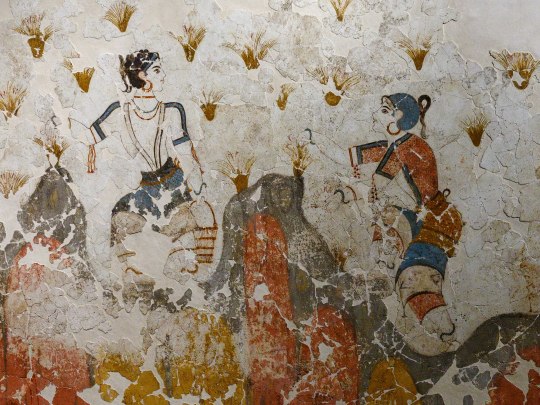
Another option is leaving the fringes loose, as seen in the Akrotiri frescoes from Xeste, room 3:
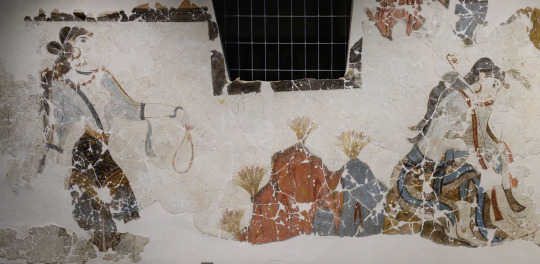
The final garment was super comfy, actually! It's much simpler to create than I thought it would be based on the frescoes, which made it all feel pretty magical when everything came together. I did think it was a little unusual how tailored this garment is, and the potential waste of fabric that comes from a shaped garment, especially compared to how later ancient greek clothing was mainly rectangles. I don't know enough about bronze-age and earlier clothing to have any idea how typical this was, since I'm extremely Not an expert on this subject, but am always open to learning more!
478 notes
·
View notes